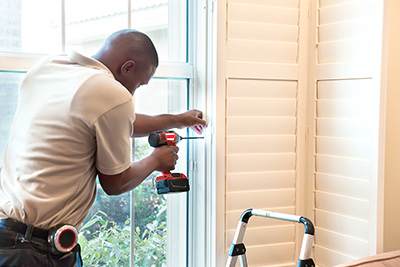Finding the Best Window Installers
Last updated May 2023
 Choosing a good installer is as important as choosing the right windows. We receive a disturbing number of complaints—often about sloppy work—from consumers regarding window installation work, often about companies that advertise heavily.
Choosing a good installer is as important as choosing the right windows. We receive a disturbing number of complaints—often about sloppy work—from consumers regarding window installation work, often about companies that advertise heavily.
Review Ratings
We regularly survey consumers in seven major metro areas and ask them to rate window installation and repair companies they’ve used on questions such as “doing work properly,” “promptness,” “letting you know cost early,” “advice on service options and costs,” and “overall quality.” We primarily surveyed Checkbook subscribers, but we also invited other randomly selected consumers to provide ratings.
We find that some window outfits make a lot of their customers unhappy: A few were rated “inferior” by more than 20 percent of their surveyed customers. But fortunately, we also identified several top-notch businesses. Carefully vet any company you consider.
Get Pricing from Several Companies
Cost can vary substantially, depending on which windows you select and who installs them.
The table below indicates the price variation among installation companies when Checkbook’s undercover shoppers contacted installers in seven major metro areas and gave them the same job specifications and let them decide which brand of windows to use. For each job, the highest-priced company’s quote was more than twice as high as the lowest quote.
You can’t get the same brands of windows from all companies, but even among companies offering the same brand, company-to-company differences of $50 to $100 per window are common.
 To get a good price:
To get a good price:
- Have several installers come to your home, measure your windows, recommend a replacement method and a brand and model of window, and quote prices.
- Discuss these recommendations and ask about lower-priced alternatives. If substantially lower prices would be available for less energy-efficient windows, ask the companies to estimate the actual energy savings the more expensive windows will produce—and insist that they provide detailed information on how they calculate these estimates.
- Decide on your final specifications. Call the companies that already provided estimates and others to get their prices for these final specifications. Get written proposals.
- If you are not confident that the quality of the windows themselves is comparable from company to company when the companies quote only on specifications, have the companies quote on a specific brand and model; several companies are likely to quote on some of the same brands and models.
- If you are remodeling and will be putting windows into roughed-in openings, consider having your contractor purchase your windows. Window installation companies are primarily geared to installing replacements, not new construction.
Until 2032 you can claim a tax credit if you install energy-efficient windows, skylights, or doors on your primary residence. The credit is equal to 30 percent of the cost of eligible improvements made between 2023 and 2032, when the program expires. For window and skylight installs, the maximum annual credit is $600; the limit for doors is $250 per door, with a $500 max credit. To qualify, the new products must meet Energy Star’s “Most Efficient” criteria—visit EnergyStar.gov/products for lists.
Also check whether there are local tax incentives and if your utility company offers rebates for installing energy-efficient windows. An excellent resource to find these types of incentives is DSIREUSA.org.


